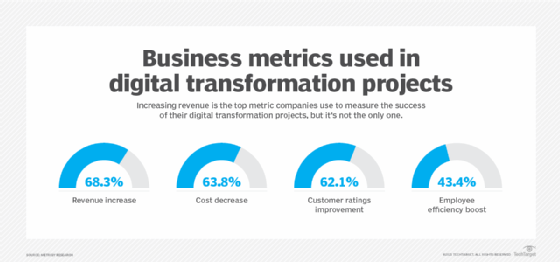
6 Tips For Digital Transformation Budget Planning
Digital transformation projects require (sometimes significant) investment in time and money before cost savings, revenue growth or productivity improvements are realized. Securing the necessary funding requires careful planning and convincing data.
Digital transformation budget considerations
For starters, traditional budgeting is fairly consistent year-over-year, with stakeholders requesting increases based on the previous year’s operational and capital budgets. The budgeting process continues with some back-and-forth discussions on the actual percentage increase or decrease until it’s finalized.
In addition, traditional budgets typically cover technologies required to “keep the lights on” and deliver the services employees need to do their jobs. Upgrades and replacements are planned years in advance, and employee counts generally stay fixed as a percentage of the total employee count. There are few unknowns, and the budgeting follows the same, predictable model year after year.
6 digital transformation budget tips
Here are six important considerations to keep in mind as you’re budgeting for your digital transformation project.
1. Identify the project and participants
It’s much easier to win budget allocation by identifying the most relevant project.
In larger companies, many projects could be competing for the same budget dollars. That’s why it’s also crucial to know the budget holders’ areas of interest, so that you can map your projects to the right person — and to all relevant pools of funding. (See consideration #2.)
Having the right people on a project is critically important at this point, because the capabilities of the team may convince budget holders of the project’s likelihood of success. Look at the track record of the key people on any transformation team and of any third-party partners who may assist with the project. Be sure to tout their credentials.
A top-flight digital transformation team also needs to be nurtured from the get-go. If possible, secure funding for in-person kickoff meetings and for bonuses if the project is successful.
2. Identify the budget holders
There are various ways companies fund digital transformation projects. It’s important that the people responsible for digital transformation identify all potential funding sources.
Some companies budget for the transformation projects, and others don’t. Those who budget may keep allocations centralized; others earmark funds for transformation projects, but the amounts are distributed among several business units’ budgets. Some organizations do not have a designated digital transformation budget, but they do have a centralized or decentralized pool of discretionary spending. Even companies with transformation budgets may also have discretionary spending that can be tapped for bolstering digital projects.
3. Build the business case
This is perhaps the most important determinant of digital transformation success. Prior to pitching any project, build a business case that shows the business benefits of the digital transformation project with success metrics and real-world improvements for employees and/or customers.
Building a successful business case can take three to six months for small organizations, and six to 18 months for larger ones. In building the business case, find out the spending figures and operational metrics from current spending so that there is a basis for comparison. Then cast a wide net for both providers and service delivery to get approximate prices to set the budget.
Part of the business case also should include a before-and-after look at what the transformation project will accomplish. For example, in a client-facing initiative, the company might be spending $25 per customer interaction because the only option is a voice call. A transformation project that digitizes the contact center will activate webchat, self-service knowledge bases and SMS. The digital transformation project’s business benefits to the company include lower operational costs and more revenue via new predictive analysis tools to recommend products to customers in webchat or self-service.
4. Stay agile
Budget planning is always a best-guess effort. Until the project starts, it’s difficult to predict every twist and turn on the digital transformation roadmap. So, depending on the project, agility is important. Smaller, single-app projects may only take three months to complete, in which case, budget predictions likely will be more accurate.
But larger projects may require some flexibility in the budget and the support staff. Labor rates may unexpectedly rise, new security rules may require additional software, or new demands may emerge if leadership changes. Digital transformation projects slated for 2021 could also be affected by the ongoing COVID-19 pandemic so it’s important to set expectations correctly — namely, that project plans may change over time — and to schedule regular updates with all stakeholders. This will protect the team’s reputation for the next budget request.
5. Market the project’s value
In order for digital transformation projects to be successful, professional marketers can help tremendously by getting the word out in creative, informative ways. Don’t rely on IT to be responsible for user awareness of the new technology or processes. Building a digital transformation culture will spur adoption and inspire employees to use and improve the new ways of working introduced by the project. Marketing experts can organize lunch-and-learns, create “how-to” content, design logos and eye-catching materials that capture the interest of employees or customers.

6. Measure success
Data helps get funding. So with any digital transformation initiative, track the success in metrics that matter. At the outset of any project, identify the baseline metrics and actual numbers. Then, track the change on preestablished intervals. Typical business metrics include:
- revenue increase
- cost decrease
- customer ratings improvement
- employee efficiency boost
The following additional metrics cited anecdotally in our research include:
- the number of employees required to perform a task
- the ability of the project to gain a competitive advantage for the company
- employee retention
- technology downtime
